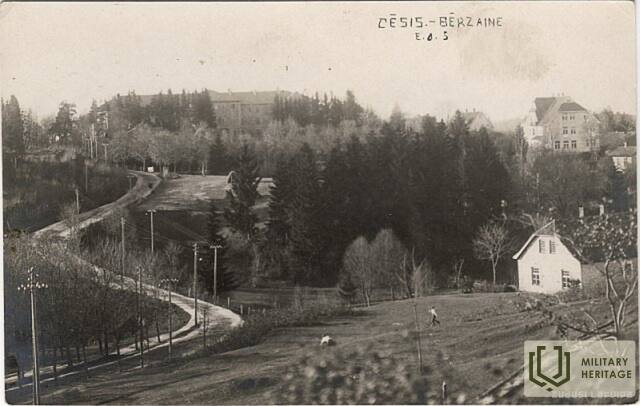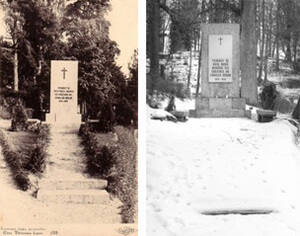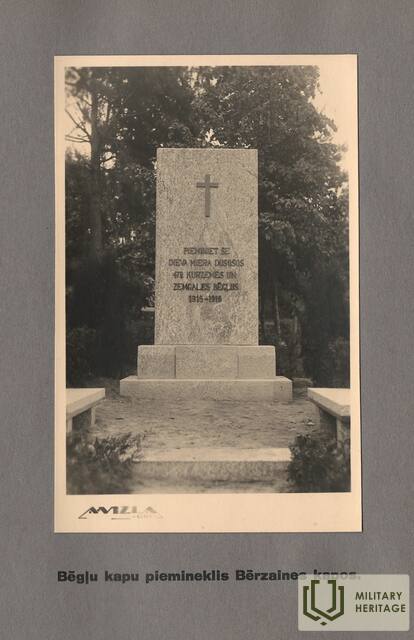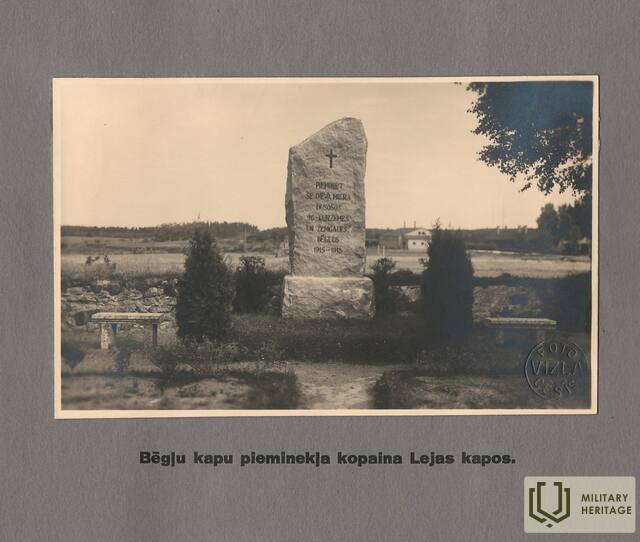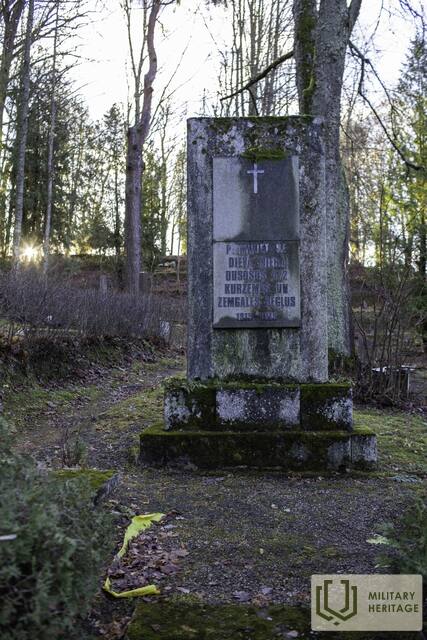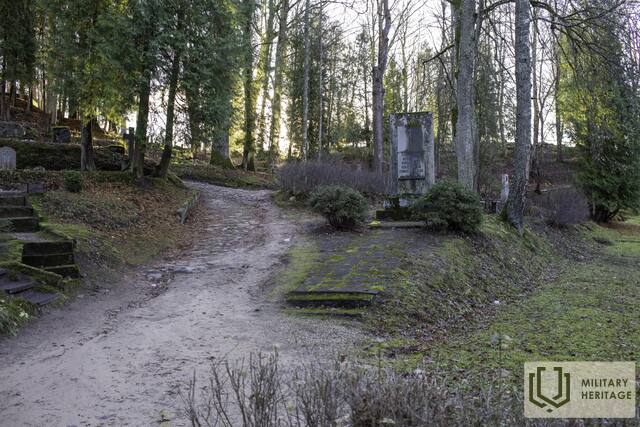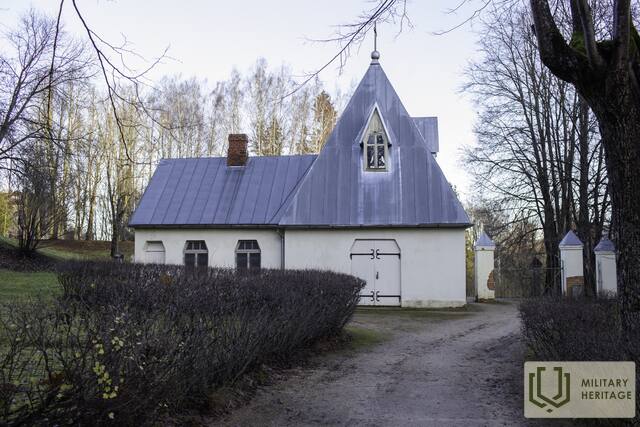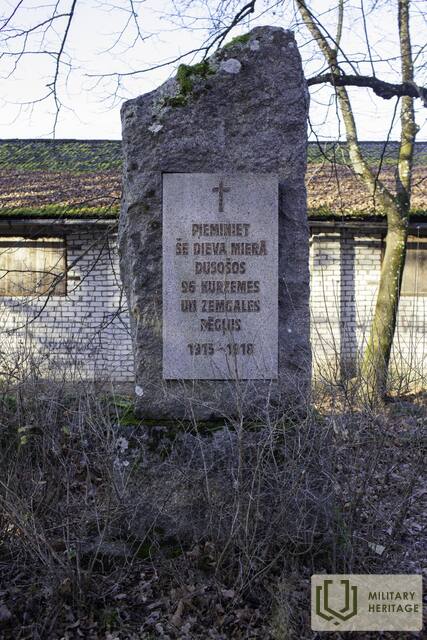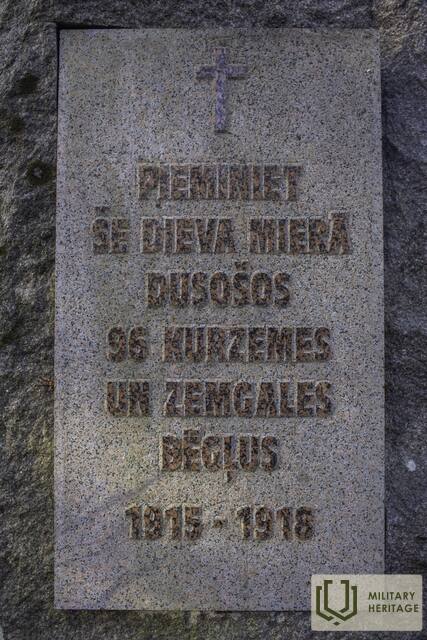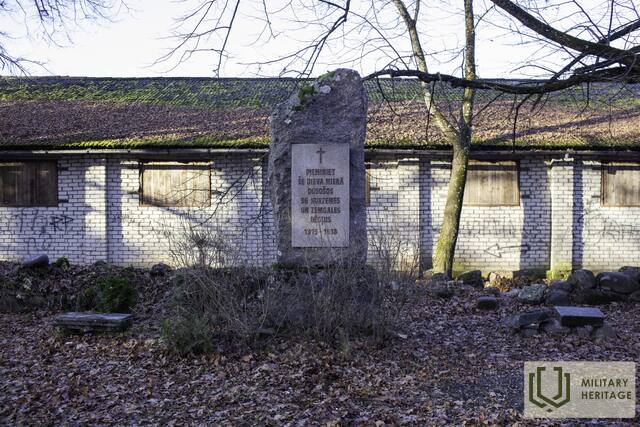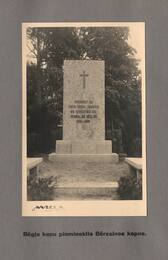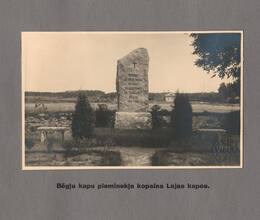Memorial sites and burials of Kurzeme and Zemgale refugees in Cēsis
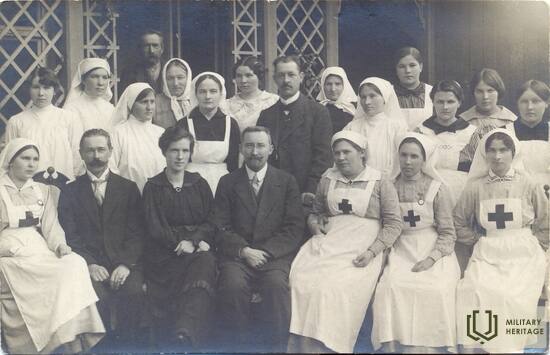
Before the First World War, 2,552 thousand people lived in the territory of Latvia. The census of 1920 registered 1,596 thousand people. This means that during this period the population of Latvia had decreased by 956 thousand people, or by 37.5%.
In the summer of 1915, German troops occupied Courland and Semigallia. More than half a million refugees left their native places in an endless stream. The first refugees arrived in Cēsis in April 1915.
In 1914, the "Cēsis City and Surrounding Area Latvian Aid Committee" was established in Cēsis, which in turn was divided into subcommittees: refugee registration, hospitals, kindergarten, catering, shoemaking, etc. Local residents carried out a variety of work to at least alleviate the inhumane living conditions of the 2,705 refugees who had settled in Cēsis.
From August 1915 to May 2018, the First Refugee Hospital operated in Cēsis, where 2,130 patients were treated. On August 24, 1915, a 50-bed refugee hospital and outpatient clinic for infectious diseases was opened in Cēsis, at Jaunā (now Piebalgas) Street 6, under the leadership of Dr. med. E. Akermana (1878-1954). His wife, doctor V. Treigute-Akermane (1883-1970), managed the second refugee hospital and outpatient clinic opened in Cēsis. At the medical congress convened in St. Petersburg to address the current issues of treating refugees and local residents, Latvian doctors were also represented in April 1916 by Dr. med. E. Akermanis from Cēsis. In a statement in the "Cēsu Avīze", the Baltic Refugee Supply Committee reminded the people of Cēsu that "those especially sick with contagious diseases are immediately admitted to refugee hospitals."
In the memories of that time, the senior nurse Eba Krēmane (1875–1942) is mentioned as a symbol of selflessness and mercy. The organization of relief work is also undertaken under the leadership of the pastor of the Cēsis city parish, Prof. Voldemārs Maldonis (1870-1941).
Despite efforts, around 700 refugees died in epidemics alone. They were buried in the Leja and Bērzaine cemeteries.
On February 17, 1933, a refugee committee met in Riga and decided to “operate as a unit under the Cēsis City Parish with the aim of collecting and beautifying refugee grave sites, as well as erecting memorials in the cemeteries of Cēsis and the surrounding area.”
By May 1935, 6,883.20 lats had been donated.
On February 11, 1936, an agreement was reached with sculptor Kārlis Jansons (1896-1986) to erect monuments in the Leja and Bērzaine cemeteries. Both monuments were unveiled on June 14, 1936, and they cost 4,600 lats.
In the lower cemetery, a roughly hewn granite stela rises above a square base, with a bronze cross at the top. Below it is a message in bronze letters:
MENTION
HERE IN GOD'S PEACE
DURING
96 COURZIE
AND ZEMGALE
REFUGEES
1915-1918
In the Bērzaine cemetery, granite steps lead to a mound, where a stele rises above a two-stepped base. The smooth granite surface features a bronze cross, beneath which are the words in bronze letters:
MENTION HERE
REST IN GOD'S PEACE
472 COURZIE AND
REFUGEES FROM ZEMGALE
1915-1918
The return of refugees and prisoners of war began as early as 1919, immediately after the establishment of the new Latvian state. However, mass re-emigration took place in 1920-1921, when almost 200 thousand people returned. People also returned home between 1922 and 1927, but the numbers returning became smaller and smaller.
S.Upīte, P.Puķite, World War I and Freedom Struggle Memorial Sites in the Cēsis District, Cēsis Museum Association, 1989
https://www.literatura.lv/lv/person/Voldemars-Maldonis/873554
http://www.muzejs.cesis.lv/lv/jubilaru-pietura-cesis/
http://edruva.lv/piemineklis-berzaines-kapos/
https://lr1.lsm.lv/lv/raksts/siis-dienas-aciim/latviesu-begli-krievija-pirma-pasaules-kara-laika.a55907/
https://www.vestnesis.lv/ta/id/31751
Related timeline
Related topics
Related objects
Monument to the First World War Refugees of Kurzeme and Zemgale
Located in the Bērzaine cemetery
Monument to the First World War refugees of Kurzeme and Zemgale.
On February 17, 1933, a refugee committee met in Riga and decided to “operate as a unit under the Cēsis City Parish with the aim of collecting and beautifying refugee grave sites, as well as erecting memorials in the cemeteries of Cēsis and the surrounding area.”
By May 1935, 6,883.20 lats had been donated.
On February 11, 1936, an agreement was reached with sculptor Kārlis Jansons to erect monuments in the Leja and Bērzaine cemeteries. Both monuments were unveiled on June 14, 1936, and they cost 4,600 lats.
In the Bērzaine cemetery, granite steps lead to a mound, where a stele rises above a two-stepped base. The smooth granite surface features a bronze cross, beneath which are the words in bronze letters:
MENTION HERE
REST IN GOD'S PEACE
472 COURZIE AND
REFUGEES FROM ZEMGALE
1915-1918
Monument to the First World War refugees of Kurzeme and Zemgale at the Leja Cemetery
Located in the Lower Cemetery of Cēsis.
A monument to the First World War refugees from Kurzeme and Zemgale is worth visiting.
In the lower cemetery, a roughly hewn granite stela rises above a square base, with a bronze cross at the top. Below it is a message in bronze letters:
MENTION
HERE IN GOD'S PEACE
DURING
96 COURZIE
AND ZEMGALE
REFUGEES
1915-1918
On February 17, 1933, a refugee committee met in Riga and decided to “operate as a unit under the Cēsis City Parish with the aim of collecting and beautifying refugee grave sites, as well as erecting memorials in the cemeteries of Cēsis and the surrounding area.”
By May 1935, 6,883.20 lats had been donated.
On February 11, 1936, an agreement was reached with sculptor Kārlis Jansons to erect monuments in the Leja and Bērzaine cemeteries. Both monuments were unveiled on June 14, 1936, and they cost 4,600 lats.




